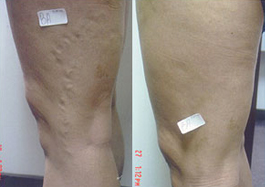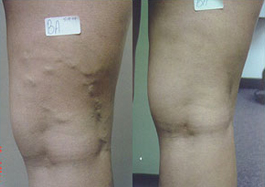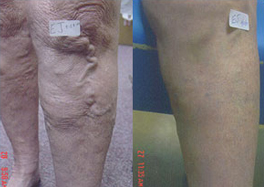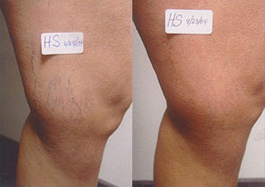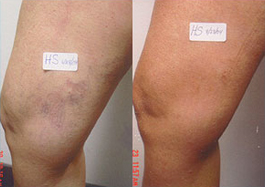Good news about DVT prevention
Statin drugs are used for cholesterol lowering and have been proven to reduce the risk of serious cardiovascular events like fatal heart attacks and strokes. Statin drugs work by reducing the total cholesterol levels in the blood. They work by blocking the key enzyme required for by the body to produce cholesterol. An additional mechanism of action statins has is there ability to reduce inflammation through out the body. This reduction in the body’s inflammation may even reduce the risk of some cancers. A recent study suggests that statins may reduce the risk of prostate cancer and possibly even shrink some tumors.
A recent study that appeared in the New England Journal of Medicine has shown the potential effects of statin drugs on reducing the risk of developing blood clots in the veins.
As already discussed, blood clots in the veins are a major cause of disability and death. These clots typically form in the large veins of the legs and in the pelvis. A pulmonary embolism may result in death. A PE results when a piece of the blood clots breaks away and travels up the veins and enters the lung. These emboli become clogged in the lungs circulation causing shortness of breath, chest pain and may lead to complete cardiopulmonary collapse and death. The results of this new large study (17,802 patients) has shown that statins may reduce the risk of blood clots by 50 % in patients who are already at a higher risk for clots and reduce the risk in patients with no risk factors by 40%. Risk for PE was reduced by 23% and the overall reduction of risk for DVT was 55%. So it may be time to use statins prophylactically in patients who have an increased risk for blood clots, or patients with severe venous disease and a history of previous blood clots.
Deep-Vein Thrombosis
Dr. Leary wanted to inform you that the coalition to prevent Deep-Vein Thrombosis (DVT) is starting its sixth annual National Deep-Vein Thrombosis awareness month. This is a very important campaign to educate Americans about the dangers of DVT and to help reduce the risks. Did you know that in the United States DVT effects up to 2 million people annually? Approximately 300,000 Americans die each year from a pulmonary embolism (PE) that resulted from a DVT. DVT related PE is the most common cause of preventable hospital death. Complications from DVT kill more people each year in the U.S. than breast cancer and AIDS combined.
Risk factors for Deep-Vein Thrombosis are common and include some of the following:
- Age over 60 years
- Any recent surgery
- Recent air travel flights over four hours double the risk for Cattle class passengers
- Prior DVT
- Immobility, Paralysis, trauma
- Malignancy
- Obesity
- Pregnancy or postpartum period
- Infection
- Inherited blood clotting disorders
History of varicose veins and venous disease makes you at higher risk for a Deep-Vein Thrombosis, so Dr. Leary at California Vein Specialists would like to extend to you a special pricing for endovenous laser treatments during the month of Deep-Vein Thrombosis awareness. He deeply cares about his patients and would like to address this very real risk.
Phlebitis of the Superficial Veins
Superficial Thrombophlebitis
I have many patients come to my office for the first time with phlebitis of the superficial veins. This is a condition that is rarely life threatening and fairly common in patients with varicose veins. My concern is that many patients referred to my office have already been seen and diagnosed by their physician, and in my opinion, have not been properly diagnosed. A complete diagnostic work up is very important because many cases of simple superficial phlebitis are associated with deep vein thrombosis which I have already discussed. Deep vein thrombosis is associated to very serious complications and can even lead to death.
Importance of a complete diagnostic work up.
Phlebitis of the superficial veins can occur spontaneously or from trauma, sometimes after surgical and/or medical procedures. Clinical examination alone can not rule out a deep vein thrombosis that may co-exist. When they co-exist, it is common to see no signs of the deep vein thrombosis, so the deep vein thrombosis remains silent. Studies have shown that up to 30% of people with the harmless superficial variety have occult deep vein thrombosis and if patients are not followed up properly with an ultrasound treatment, it has been found that 45% will develop DVT. In patients that are hospitalized and develop Superficial Phlebitis, 10% will develop a pulmonary embolus and 20% of these patients will die. The reason for this is that the mechanisms that cause superficial phlebitis are the same that cause a clot in the deep system. The pathogenesis is the same and the risk factors are the same.
Signs and symptoms of superficial phlebitis
Patients experience localized tenderness over the involved vein. Usually, the vein is tender and can have a hard feeling to it. The skin over the involved vein may become red. Most patients can be treated with anti-inflammatory medicine like Advil or Aleve. The important thing is to make sure your doctor rules out a more serious DVT. Patients need a Duplex ultrasound. It is also important to obtain a duplex ultrasound of the unaffected leg also, because if the phlebitis was from a clotting problem or hypercoagulable state it could affect the other leg in the same way. Patients should also have lab work drawn to rule out a hypercoagulable state. This is called a thrombotic risk profile which checks to see if there is something in your blood to make you more prone to blood clots. Once a DVT has been ruled out, the patient with superficial phlebitis should be followed closely with repeat ultrasounds until the phlebitis has resolved. Sometimes the superficial vein can extend into the deep system so repeat ultrasounds are mandatory.
To learn more about California Vein Specialists , search more topics and give us a call.
Deep Venous Thrombosis Awareness
In the United States, about 2 million people per year develop deep vein thrombosis. Most of them are aged 40 years or older. Up to 600,000 are hospitalized each year for the condition. Deep vein thrombosis can lead to a more serious complication, blood clots in the lung (pulmonary embolism). Statistics reveal that at least 650,000 patients die each year from pulmonary embolism, making it the third most common cause of death in the United States.
To Learn more about DVT: schedule a exam with Dr. Leary at California Vein Specialists 949.515.9377


